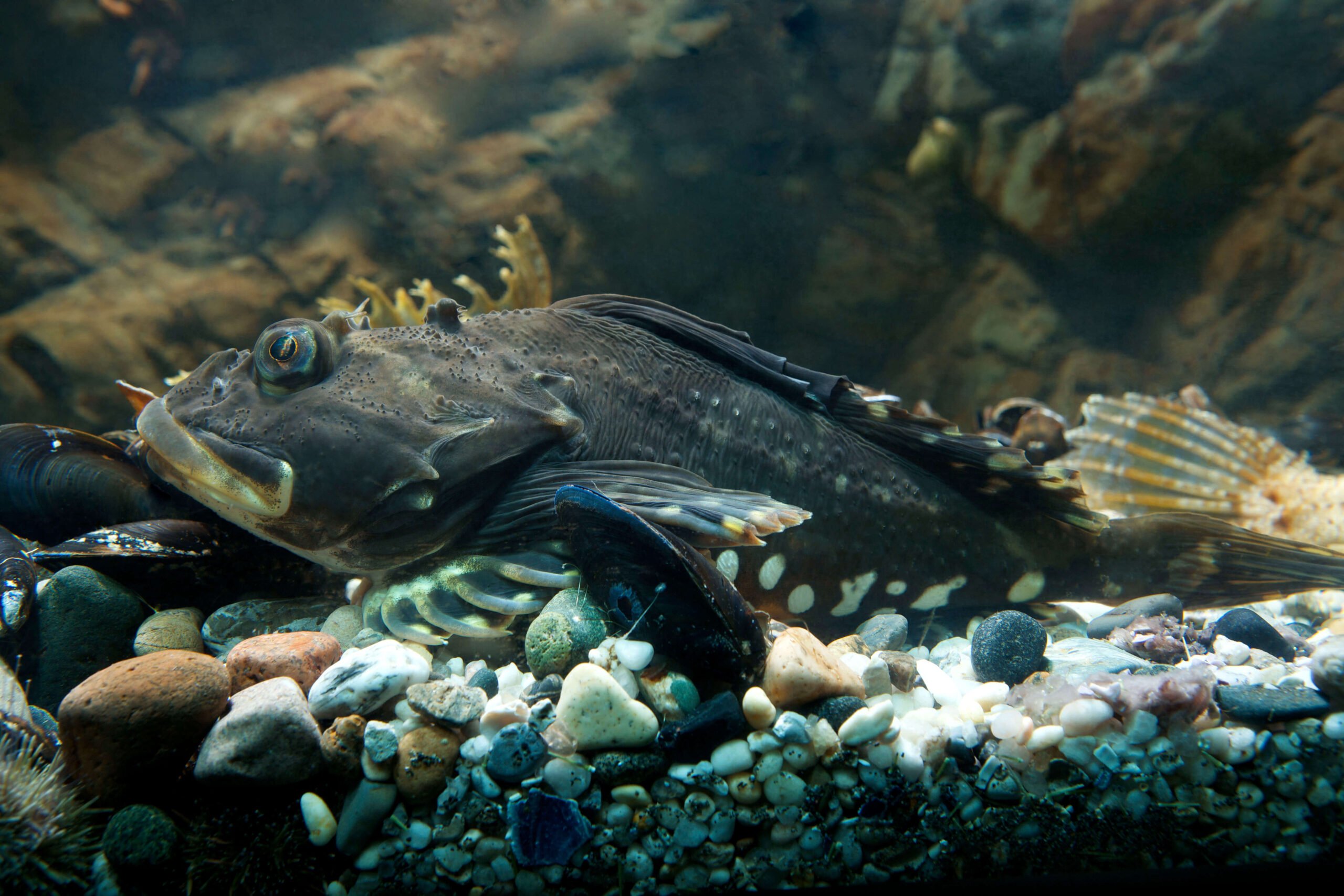
SIZE:
15 to 30 cm, up to 60 cm.
LIFE EXPECTANCY:
Up to 18 years.
LIFE CYCLE:
Sexual maturity is reached at approximately 2 years of age.
Spawning occurs near the end of November. The female will lay up to 60,000 eggs. The male is responsible for protecting the eggs over a three-month period, up until they hatch.
On the defensive
In addition to its spines, the sculpin has another very effective defence mechanism: it can modify its colour and camouflage with its environment.
The sculpin has a stocky elongated body with a plain but variable colour and is dotted or striped. During reproduction, the male’s belly becomes red with large white spots. This fish has a large head with big eyes and a wide mouth. It can eat relatively large fish compared to its size. It has spines on its head’s operculum and on its gills and back.
On the seabed, down to 450 m depth.
On muddy or sandy sea bottoms or on beds of seaweed near the coast.
PREYS:
Crabs
Shrimp
Urchins
Small fish
PREDATORS:
Cod
Seals
Seabirds

With its large head, sculpin can eat fish that are relatively large for its size.
Credit: Robert Baronet, photo taken in Exploramer’s aquariums, in 2010.
There is no direct fishing for sculpin in Québec. It is sometimes accidentally captured with catches of other bottom feeders. It can be used as bait for larger fish or lobster, but it is still good for human consumption.
Sculpin is a Smarter seafood-listed species.
BENEFITS:
Source of protein.
LET’S COOK:
Delicate and tender white meat, much like that of cod or haddock.
Braised or oven-baked are the preferred methods of cooking. It is also very good in fish stews or chowders.
Careful, it stings
If you are going to fillet the fish, watch out for the spines. As well as hurting, the operculum on the head of the sculpin becomes poisonous during the reproductive period.






